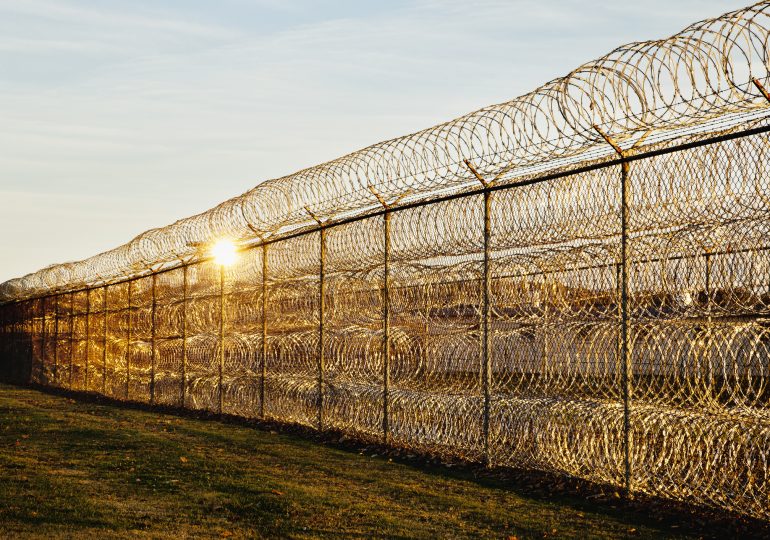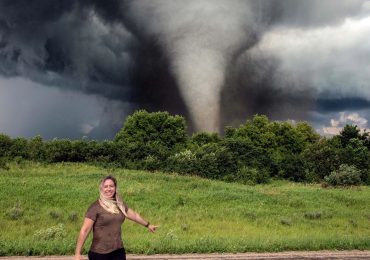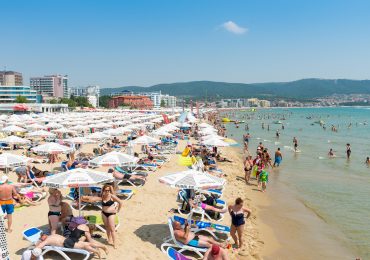Like many people, I knew nothing about the heat crisis in U.S. prisons for most of my life. I first learned of the heat crisis in U.S. prisons in early 2016, when I started teaching at a maximum security prison in South Texas. I taught creative writing there for almost seven years, and every summer my students would write about the daily torture they endured, locked in a facility without air conditioning, where temperatures often topped 110 degrees Fahrenheit. The heat gave them searing headaches and blurred vision, dizziness and nausea, as well as a despair that their society could allow such cruel treatment, ignoring their basic human rights. It was not just a physical torture, but also a psychological punishment, a message that they were subhuman. Such temperatures would violate animal cruelty laws, but they didn’t deserve this dignity.
[time-brightcove not-tgx=”true”]
My students were far from alone in this suffering. Every summer, people in many U.S. prisons are forced to take drastic measures: flooding their toilets to lie down in the slightly cooler water, wrapping wet rags around their limbs, spending their meager prison wages (usually less than a dollar an hour) to buy fans that actually increase the problem, circulating rather than cooling the stifling air. Many stop taking their medications, as this would put added strain on their hearts, which can prove lethal if added to the coronary strain of the heat. Now and then people do die, usually of cardiac incidents, though prison authorities often deny this is related to the heat torture. As a 2023 study from academic journal PLOS ONE has shown, prison suicide rates increase after heatwaves as well. One might think the temperature in the cells would lower at night, but it often barely goes down.
My purpose here is not to dwell on the basic facts of the prison heat crisis, which have been reported so well elsewhere. Though opinions differ (often by political party) on what counts as an “ethical” prison, there’s no denying that high temperatures can pose health risks. Some hard-right cynics might still deny the reality of global warming, but you only need a thermometer to know that our prisons get hotter every year. Around 44 states lack universal air conditioning in their prisons, many the hottest states in the nation; in Texas prisons alone, according to a 2022 study by Brown University researchers, there are an average of 14 heat-related deaths per year. No jury ever sentences a defendant to heat torture, but this is the punishment that hundreds of thousands must face. Some have received a death sentence for as little as cashing a bad check.
With its rising number of deaths, Texas prisons have received a specific censure from the U.N. Convention Against Torture. The U.N. called the prisons “unbearably hot” and pressed for “urgent measures.” Very few have yet been taken. Nor is this issue confined to Southern states: many Northeastern prisons lack air conditioning, and a 2023 study of their state prisons by the Prison Policy Initiative found that deaths increased around 21% from two-day heat waves.
Read More: Air Conditioning is a Human Right.’ Heat-Related Prison Deaths Are Rising Due to Climate Change
These facts are tragic enough, but there are wider implications to the crisis. In her groundbreaking book, The New Jim Crow: Mass Incarceration in the Age of Colorblindness, legal scholar Michelle Alexander wrote about the troubling demographics of U.S. prisons, which incarcerate minorities at a much higher rate than the white population. “The United States imprisons a larger percentage of its black population than South Africa did at the height of apartheid,” Alexander explained. “These stark racial disparities cannot be explained by rates of drug crime. Studies show that people of all colors use and sell illegal drugs at remarkably similar rates. …In some states, black men have been admitted to prison on drug charges at rates 20 to 50 times greater than those of white men.”
This excessive imprisonment of minorities began in the 1860s, just after the purported “end of slavery.” In Tennessee, for instance, the prison population under slavery was less than 5% Black; a year after the Civil War, that number had jumped to 52%; by 1891, it was 75%. Numbers like this could be seen across the South, and the purpose was not only punitive: the state governments colluded with business and landowners in a practice called “convict leasing,” which consigned large segments of the Black population to a slavery in all but name.
It is common for white Americans (often raised on simplistic history texts) to think that injustices like this stopped in the 1960s, with the victories of the Civil Rights Movement. In fact, the most shocking prison statistics come from the 1980s-2000s, when the “War on Drugs” swelled our penal population from around 300,000 to over 2 million, the highest in the world. Not surprisingly, much of that rise came from minority drug convictions. For Black men born in 1981, 1 in 3 can expect incarceration; in 2001, 1 in 5. Despite reforms, Black Americans are still imprisoned at around five times the rate of whites, and over nine times in supposedly liberal states like California, Connecticut, Maine, and New Jersey. Once released, they then face legalized discrimination in voting, housing, employment, education, and public benefits–the restricted rights of “second-class” citizens, not unsimilar to life in an apartheid state. As of December 2022, the U.S. imprisoned 1.67 million people, just 15 thousand less than the world leader, China, whose population is over a billion larger than ours. As Alexander wrote, “The American penal system has emerged as a system of social control unparalleled in world history.”
These racial statistics should reframe the discussion of the prison heat crisis. Yes, we should install air conditioning in every U.S. prison; yes, we should pass federal laws for prison temperature standards. But we must also examine the insidious patterns of racism in our nation, where we not only incarcerate a disproportionate number of minority citizens, but then submit them to month after month of literal torture, living conditions that would qualify as war crimes and violate articles of the Geneva Convention. In the words of one union president for Texas correctional officers, “We’re supposed to run prisons, not concentration camps.”
Over the past few years, we have decried the suffering of Palestinian and Ukrainian citizens; we have criticized Russia and Israel for their human rights abuses. Without question, this outcry is necessary and just. But at the same time, we have ignored the hundreds of thousands who suffer from heat torture in our prisons, many from minority groups that have been targeted and oppressed for all of U.S. history.
That this causes no real scandal is a flagrant sign of our racism. Every year, there is a trickle of news stories about the crisis (John Oliver ran a notable segment two years ago) but our politicians do little to oppose the torture of the systematically oppressed. President Biden’s Build Back Better Bill—rightly lauded as a major achievement—never included a single dollar to support the upgrade of jails and detention centers, even before conservatives slashed its budget. This was not even a talking point for most progressives. As a nation, it’s clear we like to pick and choose which Amendments matter to us. The Second Amendment is a rallying cry for many, but the Eighth—against cruel and unusual punishment—can barely find a voice. The reason for this is simple: the victims of torture rarely finance political campaigns.
In a moment like this one, where human rights abuses fill our newsfeeds, nearly all of us feel powerless and overwhelmed. But we are not as voiceless as those who suffer in our prisons, and prison reform is possible with enough pressure on our politicians. After a sanction from the Justice Department, Mississippi began last year to install air conditioning in all its prisons; in Texas this year, the state House passed a bill to spend $545 million on prison air conditioning (though this was then gutted by the State Senate). With the many issues that press upon us, it is easy to forget the most vulnerable in our society, especially when these people are behind bars, kept out of sight. But I ask you to remember the words of Tona Southards Naranjo, whose son, Jon Southards, died in a Texas prison this summer from a heat-related heart attack: “We need desperate change, and we need it today, this hour. They’re cooking our babies alive.”
Leave a comment








